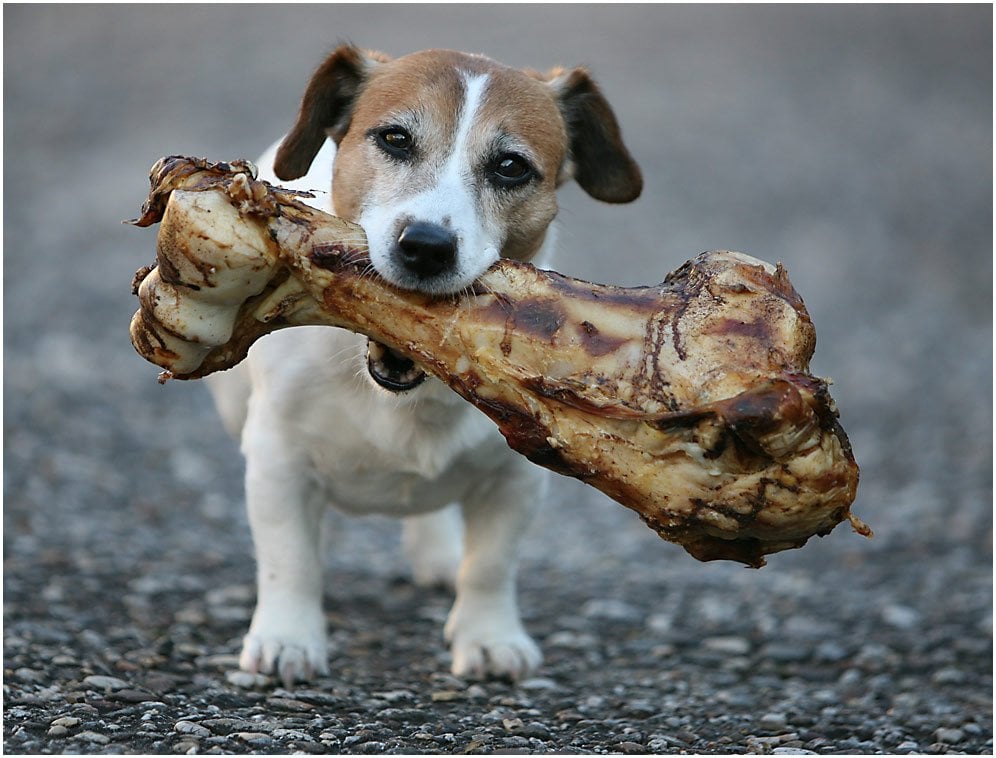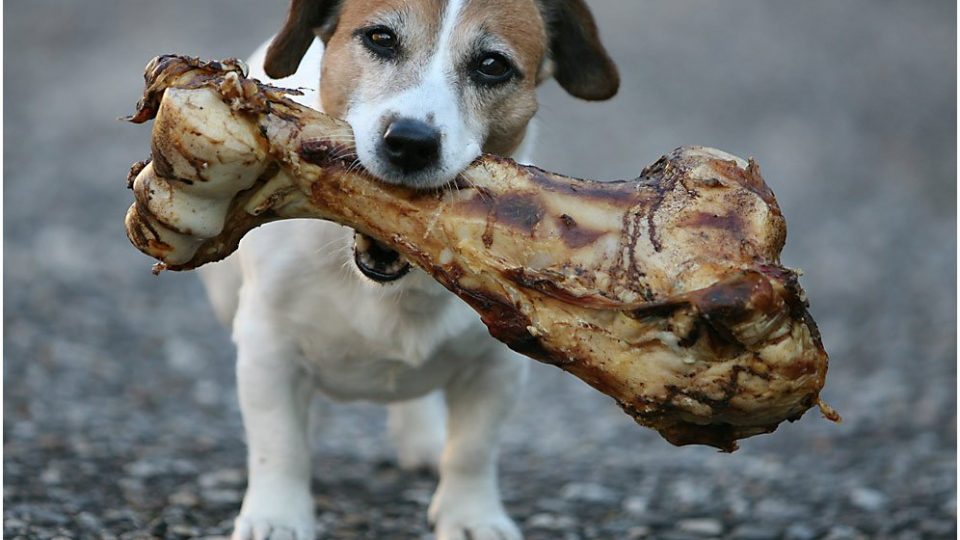Dogs and bones: it seems like a natural pairing. That’s why so many comic strips and films feature dogs gnawing on juicy bones. But in reality, some bones present health and safety hazards for your dog.
Chewing is a natural dog behaviour, and there are safe dog bones and chews available. In fact, dog bones can provide mental stimulation and keep your dog’s teeth clean. But before you hand over any old bone, read on to learn about which bones are safe for dogs.
No cooked bones ever
https://www.instagram.com/p/BgUxayOBVNJ/?tagged=dogbone
Most people know that cooked chicken bones are bad for dogs. In fact, cooked bones of any kind can be dangerous because they break and splinter into small, sharp pieces that can cut your dog’s mouth and digestive organs. Shards of bone can cause a number of health problems, including:
- Mouth and tongue lacerations
- Choking
- Broken teeth
- Cuts and wounds in the mouth or on the tonsils
- Vomiting and diarrhoea
- Severe constipation
- An intestinal blockage that may require surgery
The safest bet is to never give your dog a bone from the family dinner. Even cooked beef bones can break into dangerous pieces. In addition to being dangerous, cooked bones aren’t as healthy as other bones because the cooking process strips them of many of their beneficial nutrients.
If you want to make use of meat and bones leftover from your meal, consider boiling them up and straining them into a tasty bone broth instead.
Choosing a raw bone for your dog
https://www.instagram.com/p/Bfj2FlClD8M/?tagged=rawbone
In general, raw bones are much safer than cooked bones. However, there are some raw bones you should never feed your dog. These include:
- Pork bones, which easily splinter and crack
- Rib bones of any kind, which are small and likely to crack or get stuck in your dog’s throat
- Any bone smaller than your dog’s mouth that they may swallow whole
Raw bones from cows and bison are generally safe when used appropriately. It’s best to know where bones come from, so you should purchase raw bones from a butcher with locally sourced meat. Store them in the freezer and thaw them one at a time to give to your dog.
When choosing a raw safe dog bone, look for one that’s about the size of their head. Why so big? Well, a big bone will let your dog chew while reducing the chance that they’ll break off and swallow a dangerous chunk. For extra-large dogs, raw beef and bison knuckle bones make great chews!
One note of caution around feeding your dog raw bones: they can communicate food-borne illnesses like salmonella. If you’ve given your dog a raw bone, make sure you throw it out after a couple of hours.
Safe commercial chews
Many dog owners choose commercially-sold chews, as a safe dog bone alternative, for their convenience and safety. Greenie dental chews, which are vet-approved, are satisfying, 100% digestible chews that satisfy your dog’s urge to chew while also supporting their dental health.
Another option is a non-edible chew toy. For example, the Nylabone Dura Chew is a tough, durable nylon bone that’s infused with flavour. It satisfies a dog’s urge to chew, cleans their teeth and is virtually indestructible. No dangerous small parts here!
Some dog owners opt for fully digestible chews which don’t break into hazardous pieces. They will keep your pup busy, but they should only be used as treats. They’re not a replacement for balanced, nutritional dog food.
Whether you give your dog a raw bone, a bone-shaped treat or a non-digestible chew toy, you should always supervise their chewing. Dogs will chew for hours if you let them, so make sure you remove the chew after 10-15 minutes.
How to give your dog a bone safely

via flickr.com/erlingfiallos
When it comes to commercially available bones and chews, look for something that’s labelled as easily digestible. Or, for non-edible chew toys, pick something bigger than your dog’s mouth without small or easily breakable parts.
Any bone can cause a choking hazard when chewed into small pieces. So, you should always supervise your dog while they’re chewing a bone and take away it away once it’s worn down to a size smaller than their mouth.
Finally, it’s best if you or your fantastic dog sitter give your dog a bone or chew after they’ve already eaten. Hungry dogs are more likely to swallow pieces of bone or chew too hard and potentially injure their mouths. A satiated dog will enjoy the mental stimulation of chewing without feeling the urge to eat the bone.


